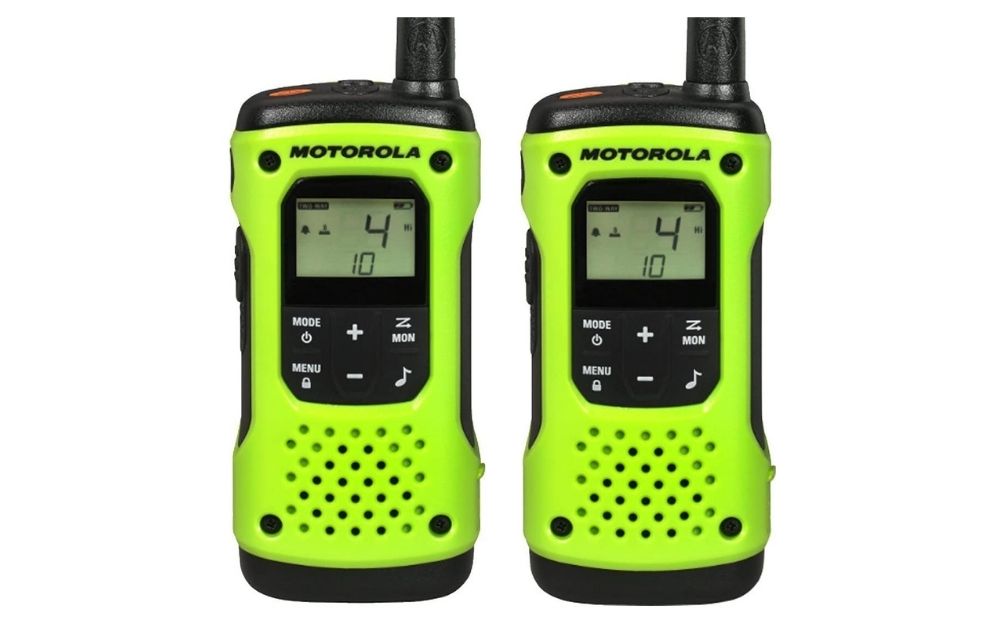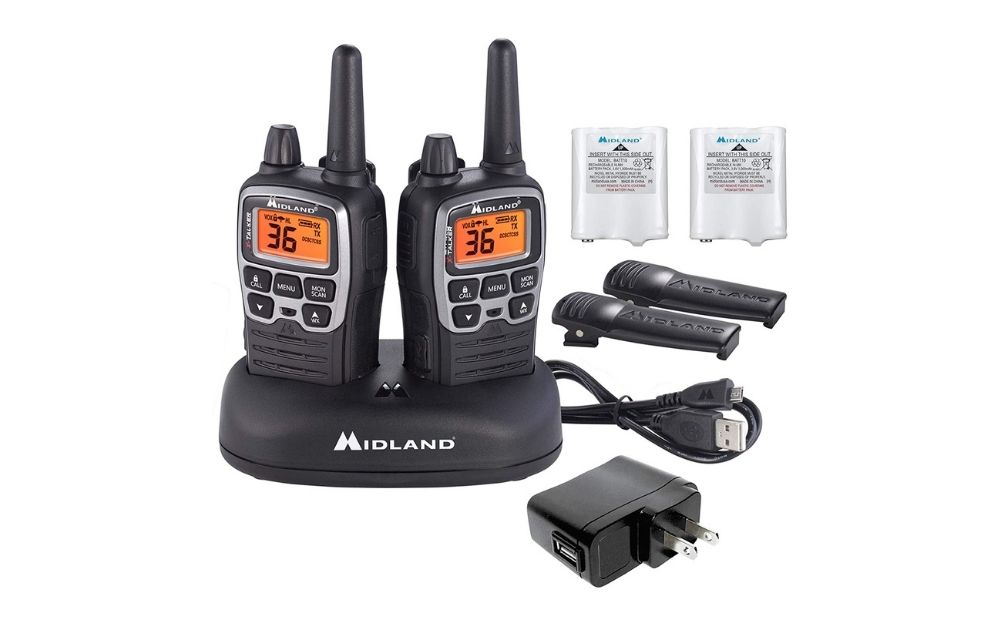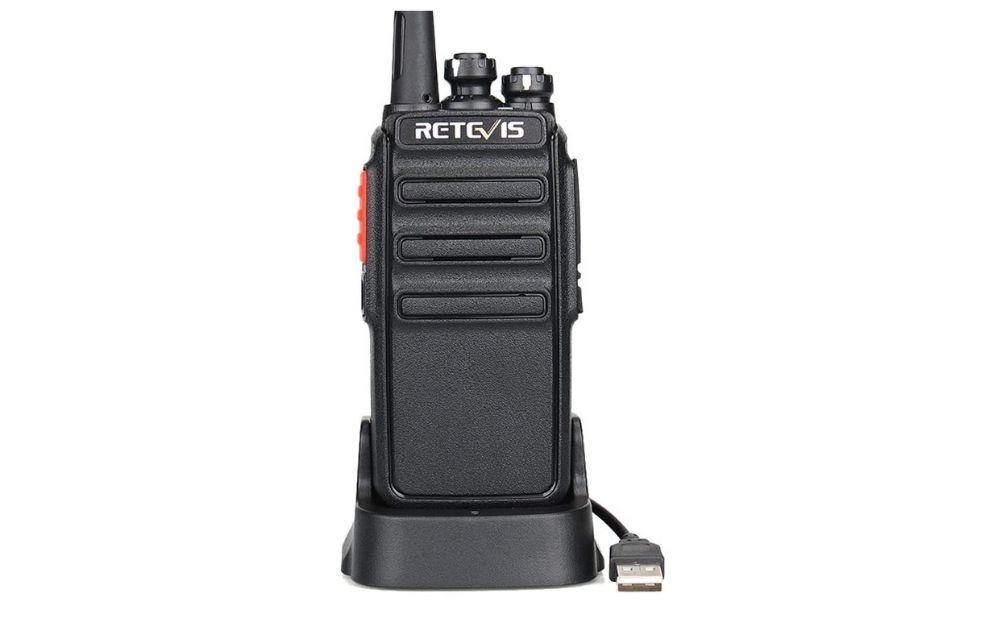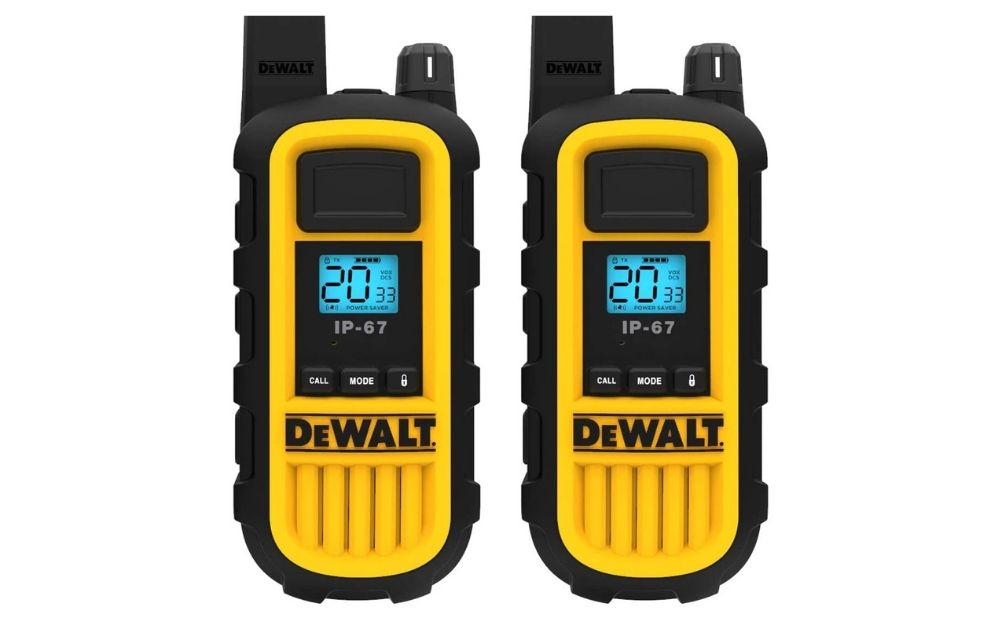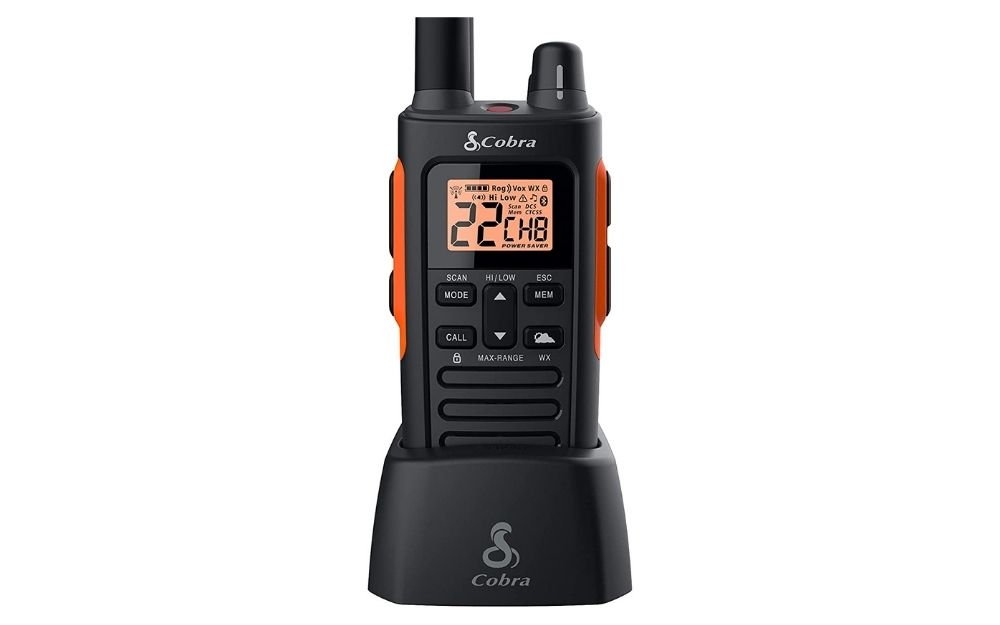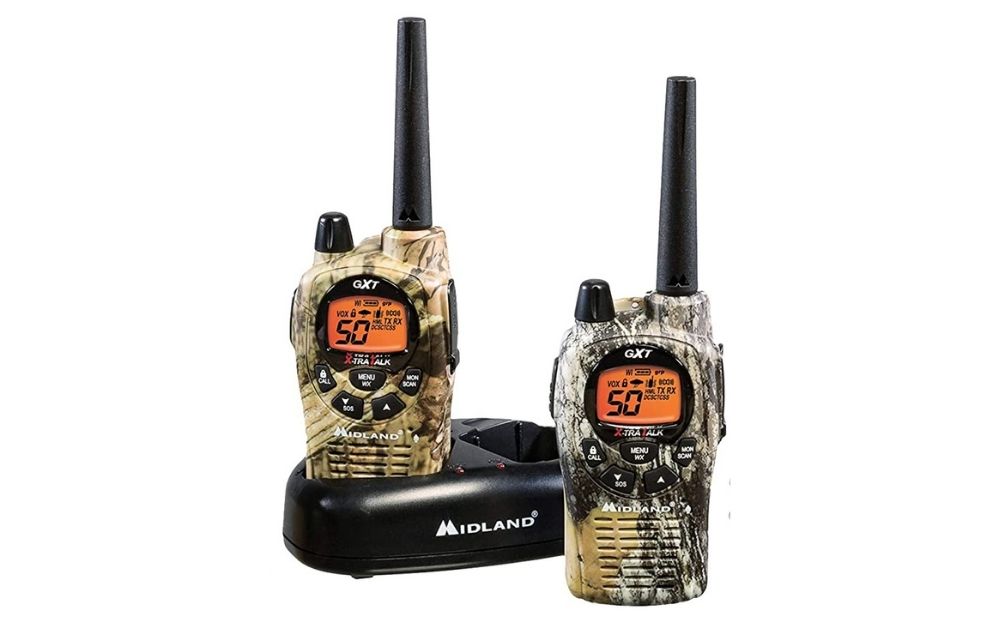Nowadays, people rely on their smartphones for everything in their daily lives.
They use them for communication, for fun, for paying bills, for finding their way in a foreign area, and so on.
The list of things you can do with your phone is endless.
However, when it comes to hiking, smartphones may not be very useful as much.
When you’re up on the mountain, you lose the signal, therefore you can’t get in touch with anyone and your phone becomes useless.
For that purpose, people use walkie talkies, even though they aren’t popular anymore in the modern age and if you’re a hiker you definitely need one.
If you don’t have the right radio communication device, hiking may get nasty.
Since walkie talkies aren’t common today, you may ask yourself which one you should get. To help with your choice, we have narrowed down a list that will show you the best ones.
See Our Best Walkie Talkies For Hiking
| # | PREVIEW | Product | |
|---|---|---|---|
| 1
Best Overall
1Motorola T600 Talkabout Hiking Radio
|
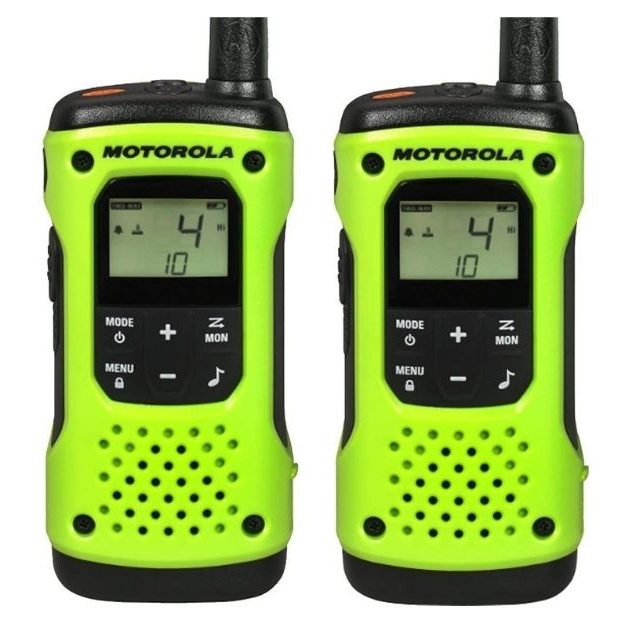
|
|
|
|
|
|||
| 2 |
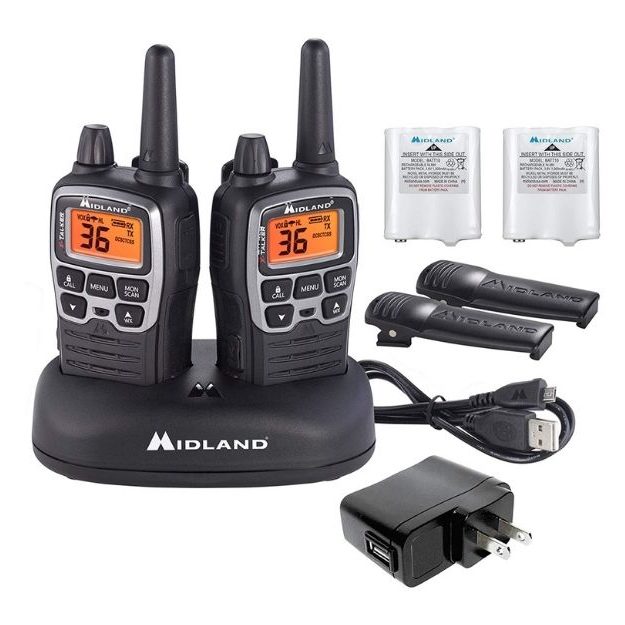
|
|
|
|
|
|||
| 3
Best For Higher Budgets
3Retevis H-777S Hiking Walkie Talkie
|
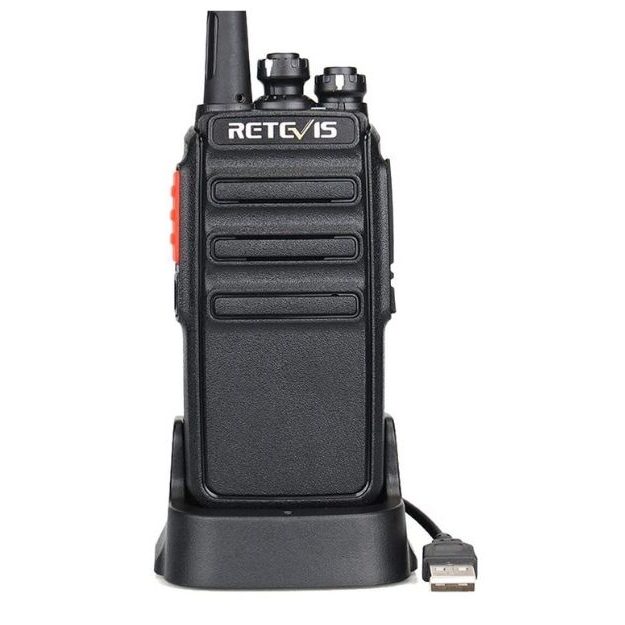
|
|
|
|
|
|||
| 4 |
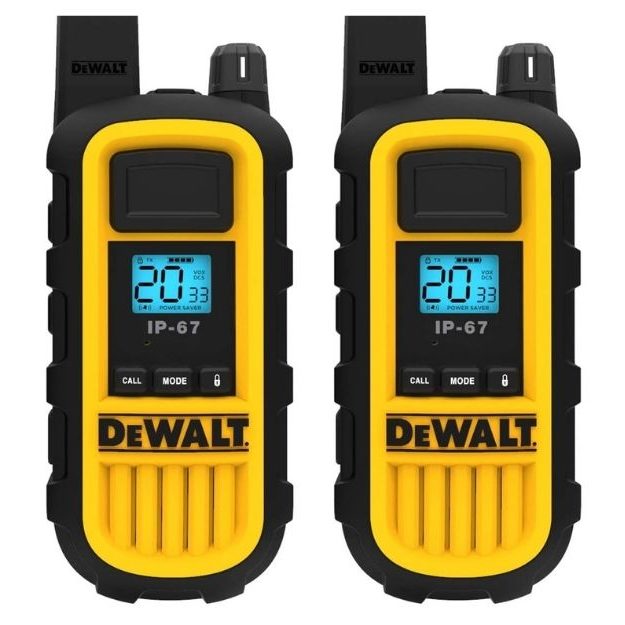
|
|
|
|
|
|||
| 5 |
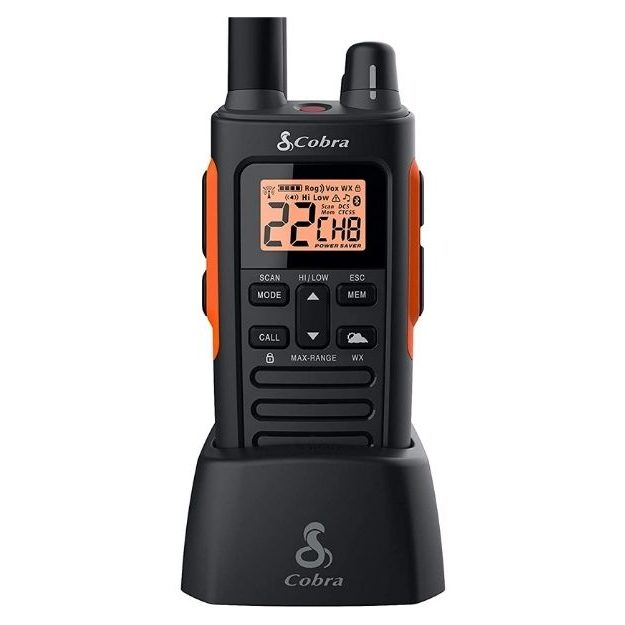
|
|
|
|
|
|||
| 6
Best For Low Budgets
6Midland 50 Channel GMRS Hiking Two-Way Radio
|
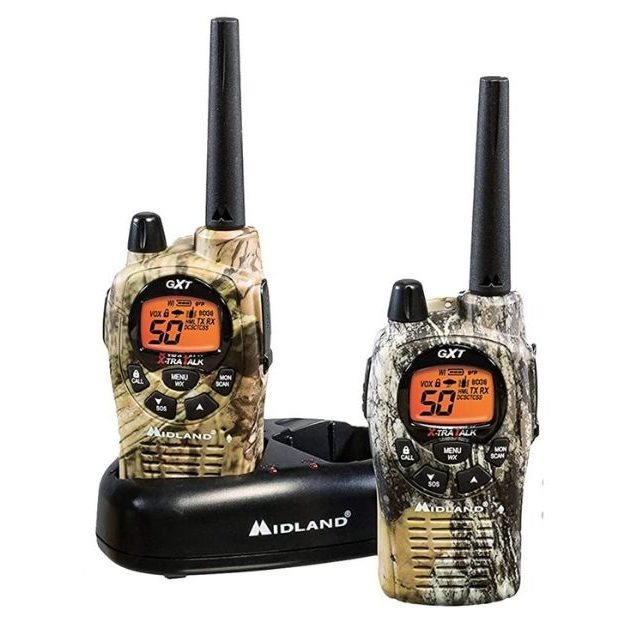
|
|
|
|
|
|||
1. Motorola T600 Talkabout Hiking Radio
- iVOX hands-free mode.
- Compatible with any radio.
- Includes 121 privacy codes.
- Super lightweight and comfortable to hold.
This Motorola walkie talkie excels in both unique and essential features for both land and marine use.
The first of these innovative features are the iVOX function. By sensing that you are talking through the direction of your voice to the radio, the need to hold the device and press a button to speak is removed. This is a handy feature for adventures on kayaks, bikes, or even skiing where you won’t be able to hold your radio.
Furthermore, this radio holds a bunch of design aspects that make it ideal for mariners. Firstly, it has a water-activated flashlight making it easy to see in case you drop it into the ocean or a lake.
Secondly, it floats in water so you don’t have to worry about losing it. It also has an IPX7 rating meaning it survives 1 meter of water for up to 30 minutes.
These features are also perfect for wet climates where you need your radio to survive rainfall.
Safety features of this waterproof walkie talkie include a built-in red LED flashlight. In an emergency, you’ll be able to switch on this light to help others locate you and understand that there is an emergency.
There is also an emergency alert button which will allow you to contact the emergency channels; 16 and 9. In addition to this, there is a belt whistle clip.
This model has access to the National Oceanic and Atmospheric Administration (NOAA) weather channels so you can stay up-to-date with any upcoming weather conditions. Bear in mind that these are not available in all locations and countries.
The most praised feature of this Motorola walkie talkie is its above-average range. It allows for strong, clean communications in most environments when there is no obstruction from trees and other natural factors.
Specifications
Pros
- Keypad lock.
- Long battery life.
- 11 weather channels.
- Includes red LED lights for nighttime.
Cons
- High price point compared to others.
- Slightly bulky size.
2. Midland X-TALKER T71VP3 Hiking Two-Way Radio
- 36 FRS/GMRS channels
- 38-mile range communication
- 121 CTCSS privacy codes
- 10 NOAA weather channels
Midland X-TALKER is a stable choice for hiking with its ability to cover communication up to a 38-mile range.
It offers 36 FRS/GMRS channels that can be connected to other two-way radios without any obstructions and it provides 121 privacy codes which will help in blocking other conversations.
The durable construction and the water-resistance feature will provide clear communication and transmission of sounds in any kind of weather.
Additionally, the NOAA weather alert sends a sound to show that hazardous weather may be present in a nearby area.
The walkie talkie has an easy voice and sound activated transmission which will enable you to use the device hands-free.
Specifications
Pros
- Durable structure
- Unhindered communication
- Hands-free operation
- Water-resistant
Cons
- Low battery life
3. Retevis H-777S Hiking Walkie Talkie
- 16 channels
- DCS/ CTCSS privacy codes
- LED flashlight
- LCD screen
Retevis H-777S has a solid construction and it can endure exposure to falls, different weather, and different elements.
It provides 16 channels and it uses the UHF 400 to 475 MHz. The DCS/ CTCSS privacy codes block any interference of communication and reduce any sound noises.
Another built-in feature is the LED flashlight which improves visibility at night, as well as the LCD screen which makes the walkie talkie more convenient to use.
The device is compact and lightweight, meaning it’s easy to carry around. Retevis H-777S comes with an earpiece and a microphone, making communication clearer and easier in a noisy environment.
Specifications
Pros
- Long-lasting battery life
- Durable construction
- Built-in LED flashlight
- Compact and lightweight
Cons
- Delicate antenna
4. Dewalt DXFRS800 Heavy Duty Hiking Walkie Talkie
- 22 preset channels
- Shock resistant
- Hands-free operation
- 121 privacy codes
The Dewalt DXFRS800 is a waterproof and dustproof device with a solid construction that can withstand exposure to different environments and conditions.
It offers 22 preset channels with 121 privacy codes which disable any interference and provide clear communication and sounds.
It includes Roger Beep Tone that ensures the completion of the transmission and signals the other side that’s clear to talk.
The device provides a power saver feature that extends the battery life and includes an LCD screen which improves its visibility.
Additionally, it provides a Voice-activated transmission, as well as a microphone, meaning that operations can be done hands-free.
Specifications
Pros
- Long-lasting battery life
- LCD screen
- Hands-free VOX operation
- Dustproof and waterproof
Cons
- Costly
5. Cobra RX680 2 Watt Rugged Hiking Walkie Talkie
- 60 channels
- 38-mile range
- 121 privacy codes
- Waterproof
Cobra RX680 2 Watt Rugged Walkie Talkie is a solid choice for a walkie talkie with 60 channels and transmission at a 38-mile range.
Due to its 121 privacy codes, this walkie talkie offers clear communication and a blockage of any interference. Providing that this device is waterproof and dustproof, there is no risk of damaging it during a hike.
The Cobra RX680 2 includes NOAA Weather Channels that send an alert when there is severe weather in a nearby area.
Additionally, you can certainly use this device for a whole day, since it has 18 hours of battery life.
Also, you can use the walkie talkie while doing something else with your hands because it includes a voice-activated transmission, i.e. it offers hands-free operation.
Specifications
Pros
- NOAA Weather and Alert
- 18 hours battery life
- Voice-activated transmission
- Dustproof
Cons
- Long time charging
6. Midland 50 Channel GMRS Hiking Two-Way Radio
- 50 channels
- 142 privacy codes
- 36-mile range
- Waterproof
The solid and waterproof construction of Midland 50 Channel GMRS offers impeccable communication without interference in any kind of environment.
The 142 privacy codes provide clear communication in a 36-mile range in open areas without obstructions.
The Waterproof Protection prevents any splashing to do harm to the device.
The NOAA Weather Scan and Alert provides scanning of 10 weather band channels and alerting when there’s severe weather in a nearby area.
The package includes a pair of Boom Mic Headsets which provide hand-free operation. The walkie talkie includes a desktop charger and two rechargeable battery packs.
It’s perfect for safe communication during hiking or even hunting.
Specifications
Pros
- Weather scan and alert
- Call and vibrate alert
- Silent operation
- Hands-free operation
Cons
- Low battery life
Hiking Two Way Radio Buying Guide
If you’re a fan of hiking, and you spend a significant time out in nature, you must remember to have safe communication.
While hiking is recreational and healthy, sometimes it can be dangerous to leave yourself out in the open without any communication device.
Therefore, walkie talkies are mandatory, considering that phones without signals are out of option. Before buying yourself a walkie talkie, there are several things that you need to consider.
Range
When it comes to the range of distance that walkie talkies can obtain, it’s important to remember that their manufacturers make a specific distance when there aren’t any barriers and obstacles, such as buildings between them or landscapes.
Therefore, an 8-mile walkie talkie can only possess a range of approximately 3-4 miles.
If the walkie talkie is intended for hiking, then it should have a quite longer range than that.
Most long range two-way devices have a range between 20 and 50 miles.
If your hiking happens on higher mountains, you should probably opt for a walkie talkie that includes a license, or you should make sure that your device has a long antenna.
The longer antenna will provide a better range and signal, meaning that you’ll have clearer communication.
Battery Life
When buying a walkie talkie, it’s important to consider the life of the battery, because you don’t want to end up in the middle of a forest without any communication because of it.
Most walkie talkies use AAA or AA batteries.
However, today’s walkie talkie devices use more improved batteries, such as lithium-ion, nickel-cadmium, and nickel-metal hydride batteries, all of which are rechargeable.
It’s advised to buy a device with rechargeable batteries due to the fact that this way you’ll be more economic and won’t spend hundreds of dollars just for batteries.
It’s also important to know the estimated battery life of your device, so you would know if you should carry extra batteries while hiking.
Features
When you’re trying to decide on a type of walkie talkie you want to purchase, it’s essential to look for extra features that will make your hike and communication easier.
You should look for features such as NOAA Weather Channels, hands-free operation, privacy codes, water resistance, GMRS Channels, LCD screen and keypad, and other built-in additions.
NOAA Weather Channels
Since you don’t want to put yourself in danger and continue a hike when there’s a storm coming over, then it’s wise to buy yourself a walkie talkie that will be able to send you an alert about severe weather in a closeby area.
Most of the modern walkie talkies offer NOAA Weather Channels that provide more than 10 channels which help in determining the weather in nearby areas and notify you if there’s bad weather incoming.
Hands-Free
Another important feature is the ability to operate your walkie talkie without the usage of hands.
While hiking, you probably carry a lot of things with you depending on the duration and length of your hike, so you may want to have your hands free for other tasks.
Therefore, having a device that provides voice-operated transmission (VOX) might be quite convenient.
Additionally, there are walkie talkies that offer earpieces and microphones that may contribute to clearer communication.
Privacy Codes
Privacy codes are important because you would like clear communication in nature, and these codes help in achieving this.
A device that uses privacy codes is able to block any other conversations that may interfere with your communication.
Therefore, if you don’t want any obstructions while communicating during a hike, it’s essential that you purchase a feature with this feature.
Water Resistance
It’s of essential importance for a walkie talkie to be able to endure exposure to water, due to the fact that you may find yourself in a wet or dusty environment.
Many people opt for water resistance or waterproof radio because it’s common to get in touch with water in nature.
Therefore, you may choose something that’ll be able to withstand a little bit of water, or stay in water for 30 minutes and still function.
GMRS Channels
Walkie talkies usually use two types of channels – FSR and GMRS.
FSR channels are free to use and open to the public, while GMRS channels require a license.
General Mobile Radio Service (GMRS) channels are considered to be better because they have a longer range than Family Service Radio (FSR) channels, meaning that this will improve the communication among your group and will prevent any obstructions.
Frequency
When you decide to purchase a walkie talkie it’s important to understand the difference between Very High Frequency (VHR) radio and Ultra High Frequency (UHR) radio.
The VHR walkie talkies operate at 126-174 MHz, meaning that they work well over long distances when there aren’t any obstructions, such as landscapes or buildings.
On the other hand, UHR walkie talkies operate between 400 and 512 MHz, and they can penetrate walls of buildings. They work better in preventing interference, therefore the communication flow is better.
Another thing to remember is that VHR and UHR walkie talkies aren’t compatible, so if you are buying several pairs bear in mind that all of them have to be the same type.
Antenna
The characteristics of the antenna of your walkie talkie determine the quality of the communication, i.e. the transmission of the sounds and messages.
In other words, the length of your antenna will determine what kind of signal you’ll be able to send.
The longer the antenna is, the better the signal would be. Generally, the radio transmission towers are placed on top of the mountains, therefore you’ll need your antenna to be pointed up high enough to get a good signal.
Also, you have to consider the construction of the antenna since some of them may be very delicate or flimsy, and they can easily be damaged.
Therefore you have to choose something that is more solid to prevent any damages while hiking.
Pricing Range
When it comes to the price range, you can find the cheapest walkie talkie at around $30, and the most expensive one above $100.
But, the price depends on the features a walkie talkie includes.
It’s understandable that the one that has most of the features will be quite expensive, but on the other hand, you don’t need all of the features.
When buying a walkie talkie you have to decide which features you really need to be able to decide what type of radio you need.
Depending on the types of your hikes, you’ll know everything you need for your communication.
But, you also have to consider that communication is very important, so you don’t want to be very stingy in this case.
Our Verdict
Once you familiarize yourself with the important features of a walkie talkie, buying one should be a piece of cake.
It’s understood that walkie talkies aren’t common nowadays, so to buy one you have to do good research on the features you need.
You don’t want to just pick one and buy it, then regret your purchase afterward.
Good and effective communication is an essential part of the hiking process to prevent accidents or to deal with ones.
Therefore, you need a device that will help you enjoy your hike, considering that this is a recreational activity and you don’t want any discomfort.
There are a lot of types of walkie talkies out there on the market, and for that reason, we’ve made a round-up list to help you in your decision.
All of the devices on our list are proven to work well and have satisfied the needs of the customers.

